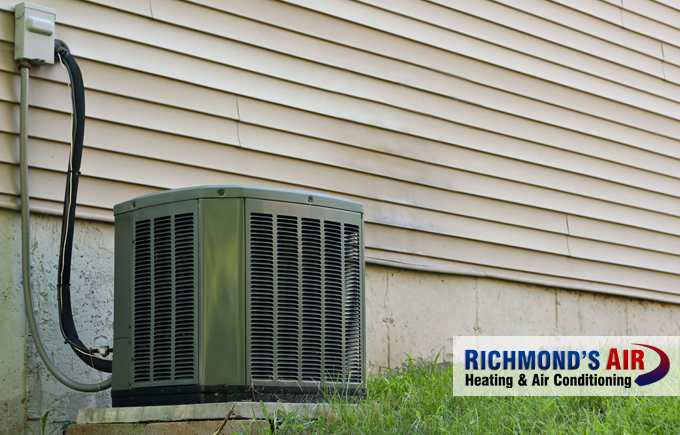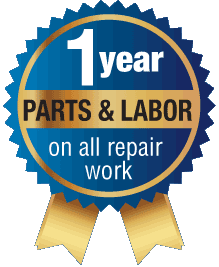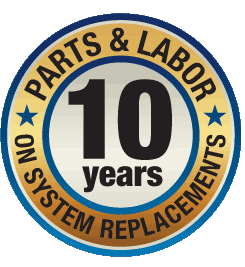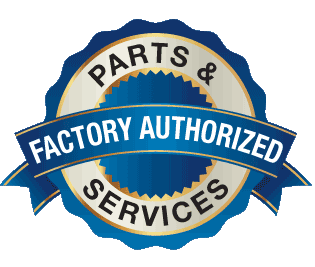What is the best AC system for Texas homeowners?
Air conditioning systems are a modern cooling technology that many of us take for granted. One thing they all have in common is their purpose: to have more comfort at home from the hot and humid climate—which is quite common here in East Texas.
There are a variety of air conditioning systems available to homeowners. Understanding how the different types of residential air conditioners work can inform your purchasing decision.
Whether you’re looking to replace an old residential A/C system or you’re installing a unit in new construction, here are the most popular types of HVAC systems and their pros and cons.
Central air conditioning
Perhaps the most common type of air conditioning found in residential setups, the central AC system certainly has its advantages.
How it works is the thermostat communicates to the system both on the inside and outside of the building to start running. The fan in the home sucks hot air inside the house through the ducts. Air is filtered from lint, dust and particles and then flows over the cold evaporator coil.
The fluid in the evaporator is heated, converting to gas. As this happens, the air gets cooled then blown back to the home through the ducts. The gas in the refrigerant is passed through the compressor that pressurizes it and sends it to the outside condenser coil.
The atmospheric air absorbs the heat, and refrigerant converts back to fluid and flows back to the indoor evaporator. The cold refrigerant then absorbs indoor heat and the sequence continues.
Pros
✔ Quiet and effective
✔ Requires little maintenance
✔ Consistent temperature throughout the year
✔ Filtered air
Cons
✘ Requires duct installation, which may be costly if your home doesn’t have existing ductwork
Ductless mini-split AC
Ductless or “mini-split” air conditioning works similar to central AC, except that it has no ducts and is only able to cool a smaller space (not usually an entire home).
The blower sucks air from the room then it passes through the evaporator that cools and absorbs moisture from the air. The chilled air is blown back into the room. The heat and moisture flow to the outside through the conduit, which is absorbed by the air.
Pros
✔ The zoning aspect allows the control to install only where you need it
✔ Uses limited space
✔ Quiet and efficient
Cons
✘ The singular zone needs an individual indoor unit
✘ Limited heating options
Portable AC
Portable home air conditioners work by cooling down the room temperature and dehumidifying the space. It contains a refrigerant, compressor and a fan.
The fan draws into the portable air conditioner. The refrigerant contains a gas that rapidly moves from low to high-pressure conditions and interchangeably moves from gas to liquid state quickly, resulting in the cooling effect.
Low-pressure gas is channeled through the compressor which pressurizes it, converting it to a heated high-pressure gas. This moves to the evaporator coils, making the pressure drop drastically. The cool air is then vented back into the room, and the heat is released via the exhaust vent or window kit attached to the ceiling, wall or window.
Pros
✔ No installation is needed
✔ It can easily be shifted from one place to the other within the house
Cons
✘ Requires frequent and regular emptying of the water tank
✘ Some units make a lot of noise
✘ Limited cooling range
Geothermal cooling systems
This AC system utilizes the constant underground temperature to extract or release heat to the ground using a closed loop system. High-density polyethylene tubing is filled with water and buried underground. The pipe is then connected to the compressor bearing the geothermal heat pump.
During summer, the hot air inside the home is pushed into the ground through the loops and cool water rises to cool the air in your home. During winter, the reverse happens. Water leaving the pump from the house is cold and the water rising into the pump is warm, which heats the air around your home.
Pros
✔ Natural source of fuel that doesn’t pollute the environment
✔ Energy efficient
✔ Low maintenance expenses
Cons
✘ Requires significant investment
✘ Requires professionals to design and install
✘ Heat pump requires electricity
Hybrid air conditioning
Also called the “dual fuel AC system,” hybrid cooling systems run using different fuel sources. The heat pump uses electricity in warm weather conditions to circulate the refrigerant, sucking warm air from the house and releasing it outside.
During the cold season, the system reverses the role to draw heat from the outside to warm the house. However, when temperatures fall drastically, it’s hard to draw in any heat, so the fuel supply changes automatically to use either gas or propane to warm up the house.
When the outdoor temperature rises, the heat pump takes over and the backup heater turns off.
Pros
✔ Efficient for different weather conditions
✔ Energy cost savings
Cons
✘ High initial cost
Window AC
The thermostat control allows AC currents to move to the compressor and the fan. The compressor evaporator coil cools while the blower sucks the air over it, cooling the air and absorbing moisture. The cool air with low humidity is then blown into the room. Chilled air then absorbs the room temperature air, and moisture is then sucked again by the blower, and the cycle continues.
Pros
✔ Affordable and easy to find
✔ Easy to install
✔ High efficiency with low noise (depending on the model)
Cons
✘ Cumbersome moving from 1 room to another
✘ Only cools 1 room
✘ Unsightly units reduce natural light in windows
 Read reviews
Read reviews









